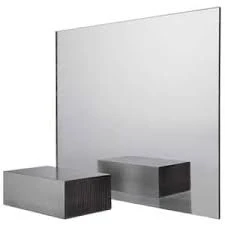

The Art and Functionality of Frosted Glass Installation
Frosted glass has become an increasingly popular architectural and decorative element in both residential and commercial spaces. Recognized for its aesthetic appeal and practical benefits, frosted glass installation adds an elegant touch while enhancing privacy without compromising natural light. This article delves into the various aspects of frosted glass, including its types, applications, installation process, and considerations for choosing the right type for your needs.
Understanding Frosted Glass
Frosted glass is a type of glass that has been treated to create a translucent finish, which diffuses light while obscuring visibility. This effect can be achieved through various processes, including sandblasting, acid etching, or the application of a frosted film. Each method varies in cost, durability, and finish, allowing for a range of options that cater to diverse architectural styles and personal preferences.
Applications of Frosted Glass
The versatility of frosted glass makes it suitable for numerous applications. One of its primary uses is in interior design where it can be employed in sliding doors, bathroom partitions, and windows, providing privacy without sacrificing light. In office environments, frosted glass is commonly used in conference rooms, office doors, and cubicles to create a balanced atmosphere conducive to both collaboration and discretion.
Moreover, frosted glass finds its application in decorative elements like room dividers and partitions, enhancing spatial aesthetics while maintaining an open sense of space. Its ability to diffuse light also makes it a popular choice for lighting fixtures, where it softens brightness and creates a warm ambiance.
The Installation Process
Installing frosted glass requires careful planning and execution to ensure optimal results. Here are the general steps involved in installation

1. Measurement and Planning The first step in any glass installation is to measure the area accurately. Consider the dimensions of the space and how the frosted glass will be utilized—whether as a door, partition, or window. Make sure to account for any hardware needed for installation.
2. Choosing the Right Glass Depending on the intended use, you have various frosted glass options, including tempered glass for safety, laminated glass for added sound insulation, or standard frosted glass if impact resistance isn’t a concern.
3. Preparing the Frame If the frosted glass is to be installed in a frame, ensure that the frame is level and free of any debris that may interfere with a secure fit.
4. Installing the Glass Carefully place the frosted glass into the frame, securing it using appropriate hardware such as clips, brackets, or adhesive. It is crucial to follow the manufacturer's instructions and ensure a snug fit to prevent movement or potential breakage.
5. Finishing Touches Once the glass is securely installed, check for any gaps or imperfections. Sealants may be used around the edges for added stability and to enhance the aesthetic finish.
Considerations When Choosing Frosted Glass
While frosted glass presents many advantages, some factors must be considered before installation. First, the type of frosted glass should align with the function it needs to serve—whether for privacy, safety, or aesthetics. Additionally, maintenance should be considered; while frosted glass is relatively easy to clean, it can show fingerprints and smudges, so regular upkeep is necessary to maintain its appearance.
In summary, frosted glass installation offers a unique combination of style and functionality, catering to various needs in both residential and commercial spaces. With the right planning, choice of materials, and installation methods, frosted glass can elevate any space, providing beauty, privacy, and an inviting ambiance. As design trends continue to evolve, incorporating frosted glass may very well be the secret ingredient to creating harmonious and sophisticated environments.